Message from David Godley regarding Sept. 16, 2015 Planning and Growth Management Committee meeting
The following text is from David Godley of Long Branch; in a separate post I will upload an additional message from David:
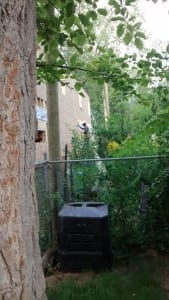
Documentation regarding trees at 2 Twenty Seventh St. The trees topic will be addressed in a separate post featuring a text from David Godley. I have included the photos in the current post as a way to create a little interest regarding the trees topic among site visitors. It’s a topic of interest for me. Please contact me if you have an interest in sharing information regarding ways we as City of Toronto residents can address this topic.
To Committee Secretariat,
I shall not be present at the Planning and Growth Management Committee meeting on 16th September but would like this letter to be circulated to members.
Thank you.
Yours truly,
David Godley,
401 Lake Promenade,
Toronto, M8W 1C3
416-255-0492
I am very pleased with the City Hall’s efforts to strengthen the protection of Neighbourhood Character. Working relationships at all levels of City Planning are co-operational.
Adding “prevailing” and the issue of elevations is a step forward (see revised wording of Section 4.1.5 at foot of email, changes in bold).
So is greater focus the micro-neighbourhood, i.e. the street block.
I have been working on these issues since the 1960s and fully trained in urban design as part of qualification as a professional planner.
I have attended 10 OMB hearings in Long Branch in the past 2 years and make the claim I have received more abuse than any resident in the city at such hearings!
But this has helped me see the problems with the process.
The current Official Plan policies are excellent but unfortunately do not work mainly due to the OMB.
Over 75% of appeals by developers have been approved by the OMB in Long Branch over the advice of the Planning Department and decision of the Committee of Adjustment.
The current Planning Department wording on neighbourhood evaluation (shown in italics below) is acceptable but improvable. I strongly object to the proposed change of wording below (especially the underlined).
Evaluation of the physical character of the geographic neighbourhood will consider matters in the following order of importance and influence: (i) properties in the same block that also face the same street as the development site, and (ii) other properties in the wider geographic neighbourhood.
The physical character of the geographic neighbourhood includes both the physical characteristics of the entire geographic area and the physical characteristics of the properties in the same block that also face the same street as the development site. The evaluation of the appropriateness of new development will consider whether the development is consistent with the prevailing character in both instances.
The reasons are threefold
– the policy does not reflect urban design principles
– the policy is not clear
– the policy is not practical
To reflect and reinforce character, a development needs to fit in with what is seen on the ground.
The most important are the abutting street properties.
The second most important is the row in which the development sits.
The third most important is the section of street (including both sides of the road).
The fourth most important and basically irrelevant is the overall neighbourhood.
There is a gradation of importance as any skilled urban designer will testify.
Visually the wider neighbourhood cannot be seen in the context of the proposed development.
Every street is different and the micro-neighbourhood (referred to as block in the Official Plan text) is what matters.
For example if the wider neighbourhood is semis and we are dealing with a street of singles, it is a single which should be built to reinforce the character. A semi would detract from character.
The new policy of treating the wider neighbourhood as equal to the micro-neighbourhood will lead to situations where the policies are in conflict with themselves.
As for a pragmatic approach it is much simpler to analyse a small area. The wider neighbourhood analysis, which is not needed, usually takes more than half the hearing. With additional prevailing criteria this analysis will at least double the length of the hearings we have now. The analyses will be endless stretching the resources of all parties needlessly.
I therefore suggest the policy be changed for the next round of public participation to:
To achieve respect and reinforcement of neighbourhood character, evaluation will use the block (both sides of the street) in which the development site sits because this is the context which can be seen. The closer properties are to the site the more weight they will be given.
This overcomes the development angle that if a development exists in a wider area it can be repeated anywhere in the neighbourhood. This is not the intent of the Official Plan but has been the basis of many decisions by the OMB.
This is my fundamental concern but there are additions which will improve the flow at hearings.
One is to add to the criteria a reference to urban design and landscaping and trees. Otherwise we have to flip all over the place to find relevant policies at any hearing.
Another item that is missing is that communities should be able to shape their neighbourhood and be involved as early in the process as possible. Moves are already underway in the Planning Department to achieve this The public participation section needs strengthening. The OMB hardly takes notice of citizens impacted.
Official Plan Five Year Review
Staff report for action on Official Plan Five Year Review: Amendments to the Healthy Neighbourhoods,
Neighbourhoods and Apartment Neighbourhoods Sections of the OP 4.1.5.
Development in established Neighbourhoods will respect and reinforce the existing physical character of the geographic neighbourhood, including in particular:
a) patterns of streets, blocks and lanes, parks and public building sites;
b) prevailing size and configuration of lots;
c) prevailing heights, massing, scale, density
and dwelling type of nearby residential properties;
d) prevailing building type(s);
e) prevailing location, design and elevations relative to the grade of driveways and garages;
f) prevailing setbacks of buildings from the street or streets;
g) prevailing patterns of rear and side yard setbacks and landscaped open space;
h) continuation of special landscape or built form features that contribute to the unique physical character of a geographic neighbourhood; and
i) conservation of heritage buildings, structures and landscapes.
A geographic neighbourhood for the purposes of this policy will be delineated by considering the context within the Neighbourhood in proximity to the development site, including: zoning; prevailing dwelling type and scale; lot size and configuration; street pattern; pedestrian connectivity; and natural and human made dividing features.
The physical character of the geographic neighbourhood includes both the physical characteristics of the entire geographic area and the physical characteristics of the properties in the same block that also face the same street as the development site.
The evaluation of the appropriateness of new development will consider whether the development is consistent with the prevailing character in both instances.
[End of text from David Godley]
See also: Sept. 13, 2015 message from David Godley regarding conservation of Long Branch

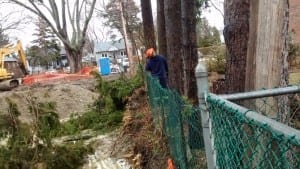
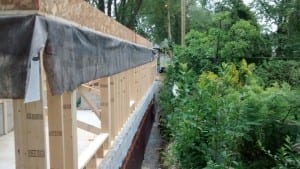
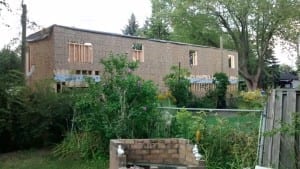
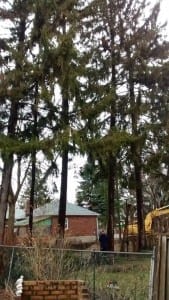
Leave a Reply
Want to join the discussion?Feel free to contribute!